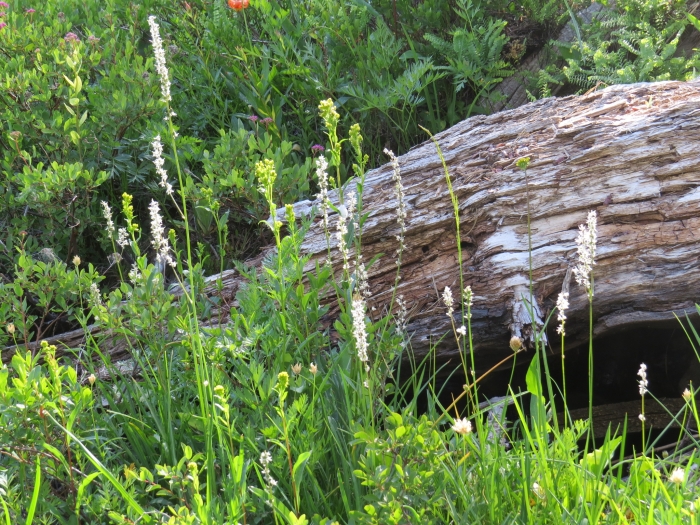White Rushlily
(Hastingsia alba)
White Rushlily (Hastingsia alba)
/
/

© Garth Harwood
CC BY 4.0
Image By:
© Garth Harwood
Recorded By:
Copyright:
CC BY 4.0
Copyright Notice:
Photo by: © Garth Harwood | License Type: CC BY 4.0 | License URL: http://creativecommons.org/licenses/by/4.0/ | Uploader: garth_harwood | Publisher: iNaturalist |
























Estimated Native Range
Summary
Hastingsia alba, commonly known as White Rushlily, is a perennial herb native to the serpentine soils of wet meadows and seeps in the Klamath-Siskiyou region of northern California and southern Oregon. It typically grows from a black-coated bulb and produces erect stems that can reach up to 35 inches tall. The plant features long, thin basal leaves and dense, pointed inflorescences of cream or greenish-white flowers with curly, lily-like tepals that bloom in late spring to early summer. The flowers are subtly showy and attract pollinators.
White Rushlily is valued for its unique appearance and adaptability to wet, heavy soils, making it a suitable choice for water gardens, bog gardens, and naturalized areas. It requires consistently moist soil and can tolerate partial shade, though it prefers full sun. This plant is relatively low-maintenance, but it is not commonly found in cultivation. When grown, it provides an interesting texture and form to the garden landscape. There are no widely known cultivars of this species, and it is generally free from serious pests and diseases. However, it is important to avoid overly dry conditions, which can be detrimental to its health.CC BY-SA 4.0
White Rushlily is valued for its unique appearance and adaptability to wet, heavy soils, making it a suitable choice for water gardens, bog gardens, and naturalized areas. It requires consistently moist soil and can tolerate partial shade, though it prefers full sun. This plant is relatively low-maintenance, but it is not commonly found in cultivation. When grown, it provides an interesting texture and form to the garden landscape. There are no widely known cultivars of this species, and it is generally free from serious pests and diseases. However, it is important to avoid overly dry conditions, which can be detrimental to its health.CC BY-SA 4.0
Plant Description
- Plant Type: Herb, Bulb
- Height: 1-3 feet
- Width: 0.25-1 feet
- Growth Rate: Moderate
- Flower Color: White
- Flowering Season: Summer
- Leaf Retention: Deciduous
Growth Requirements
- Sun: Full Sun, Part Shade
- Water: Medium, High
- Drainage: Medium
Common Uses
Bee Garden, Low Maintenance, Water Garden
Natural Habitat
Serpentine soils of wet meadows and seeps in the Klamath-Siskiyou region
Other Names
Common Names: White-flowered Rushlily
Scientific Names: , Hastingsia alba, Schoenolirion album,
GBIF Accepted Name: